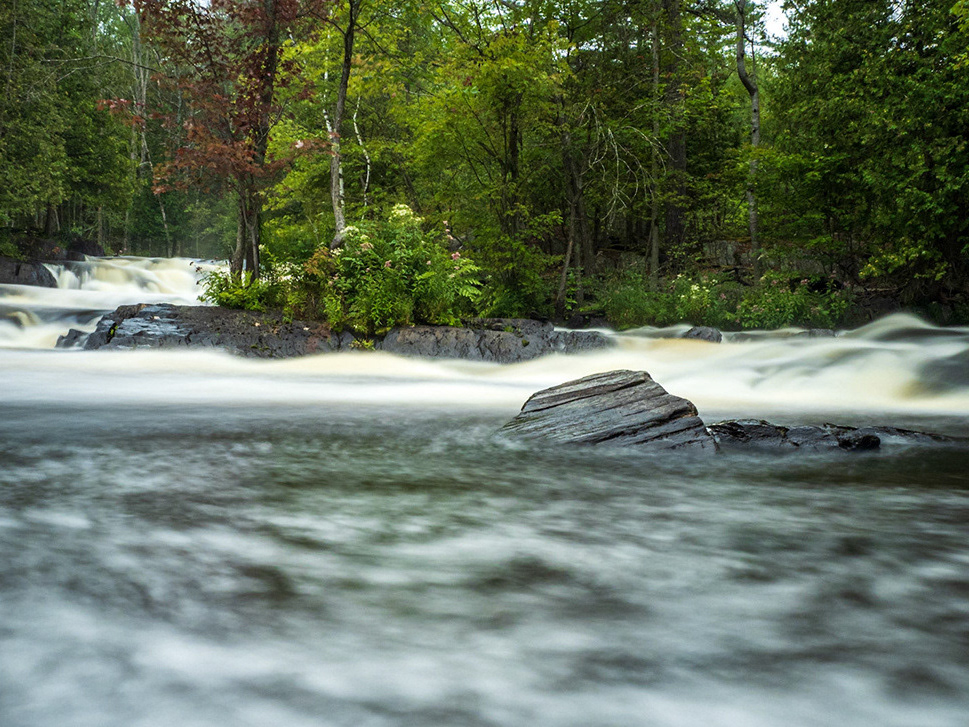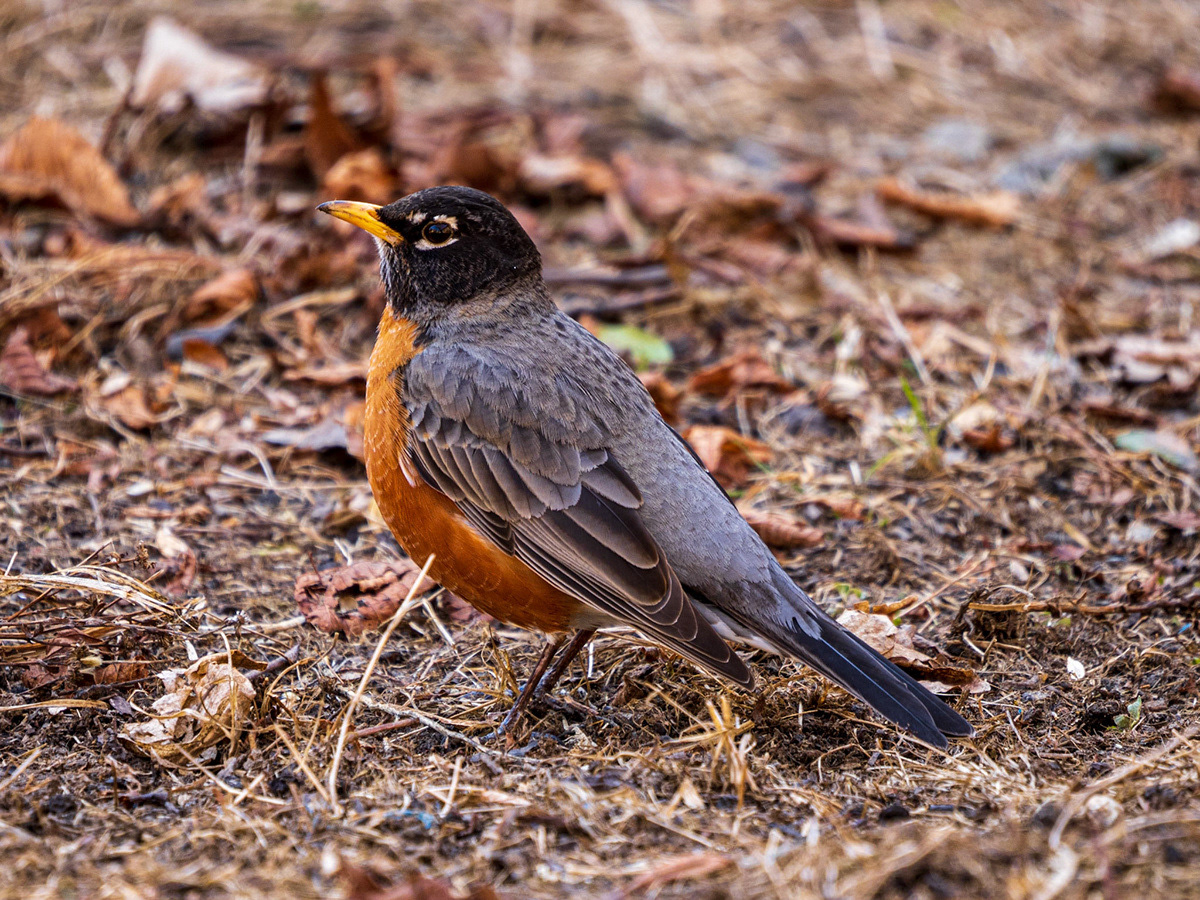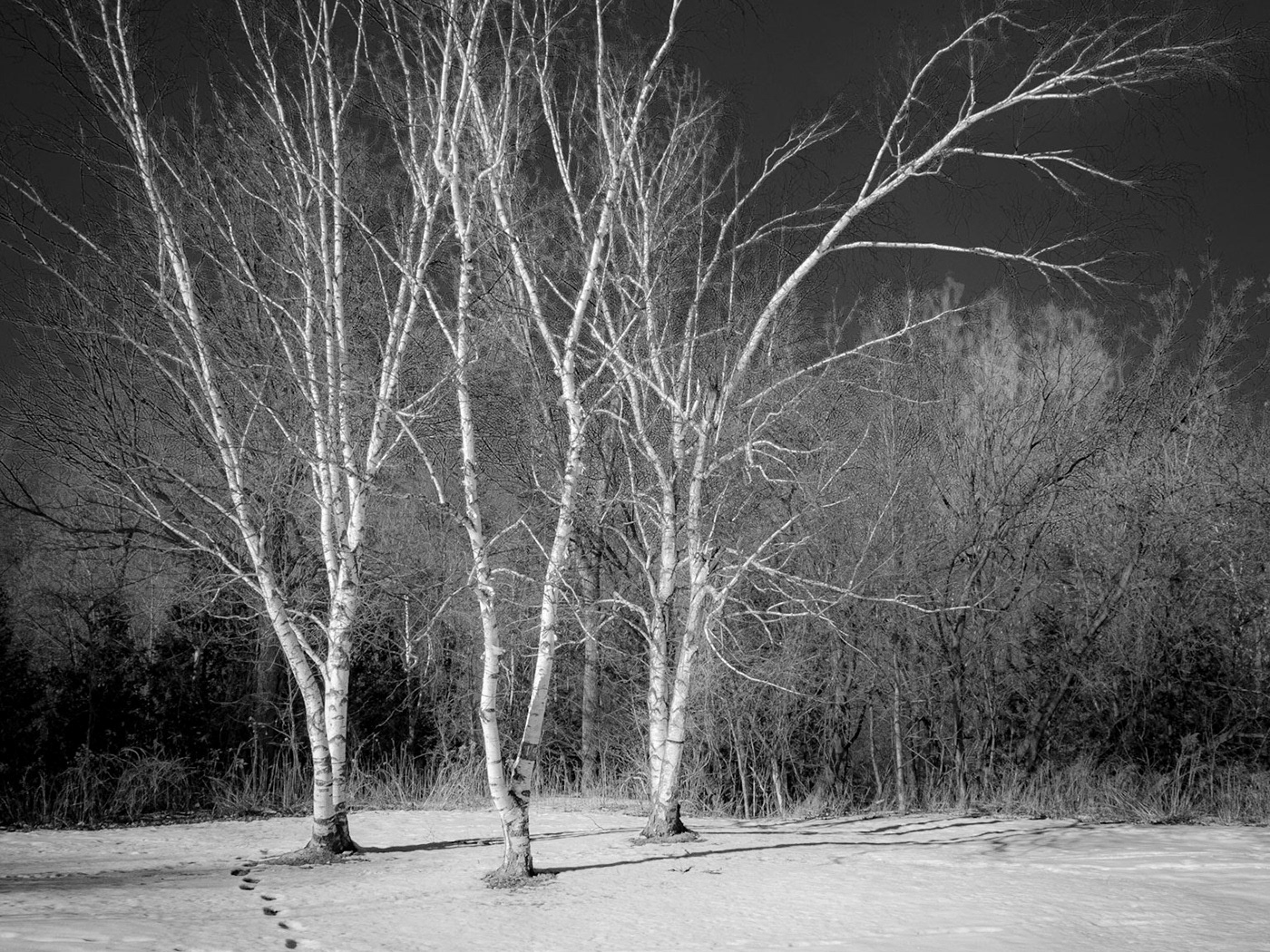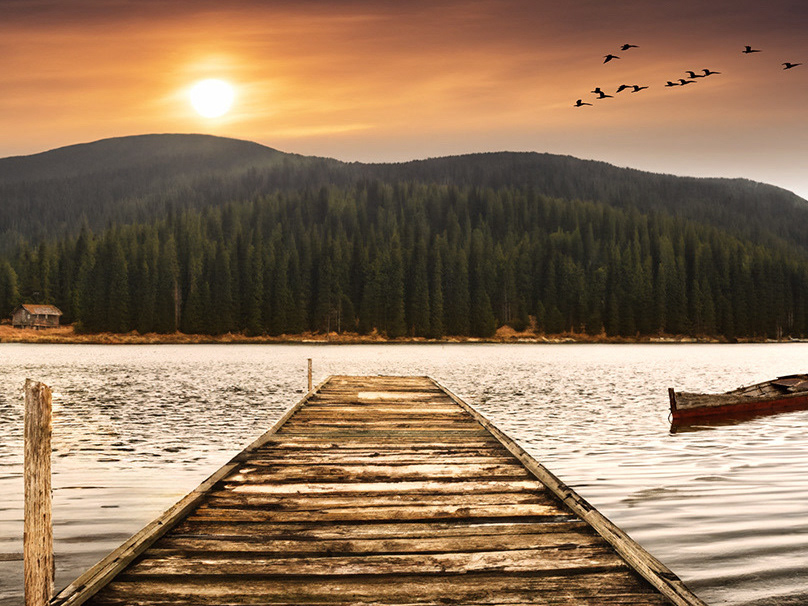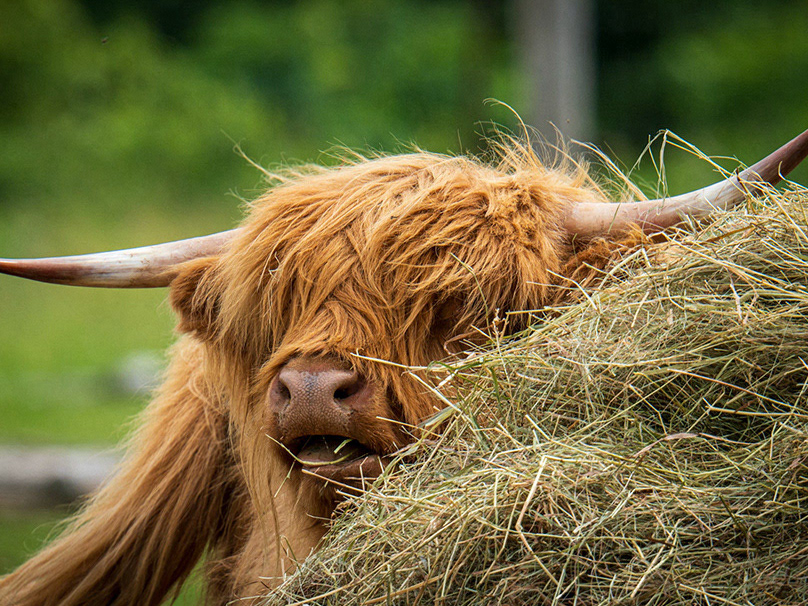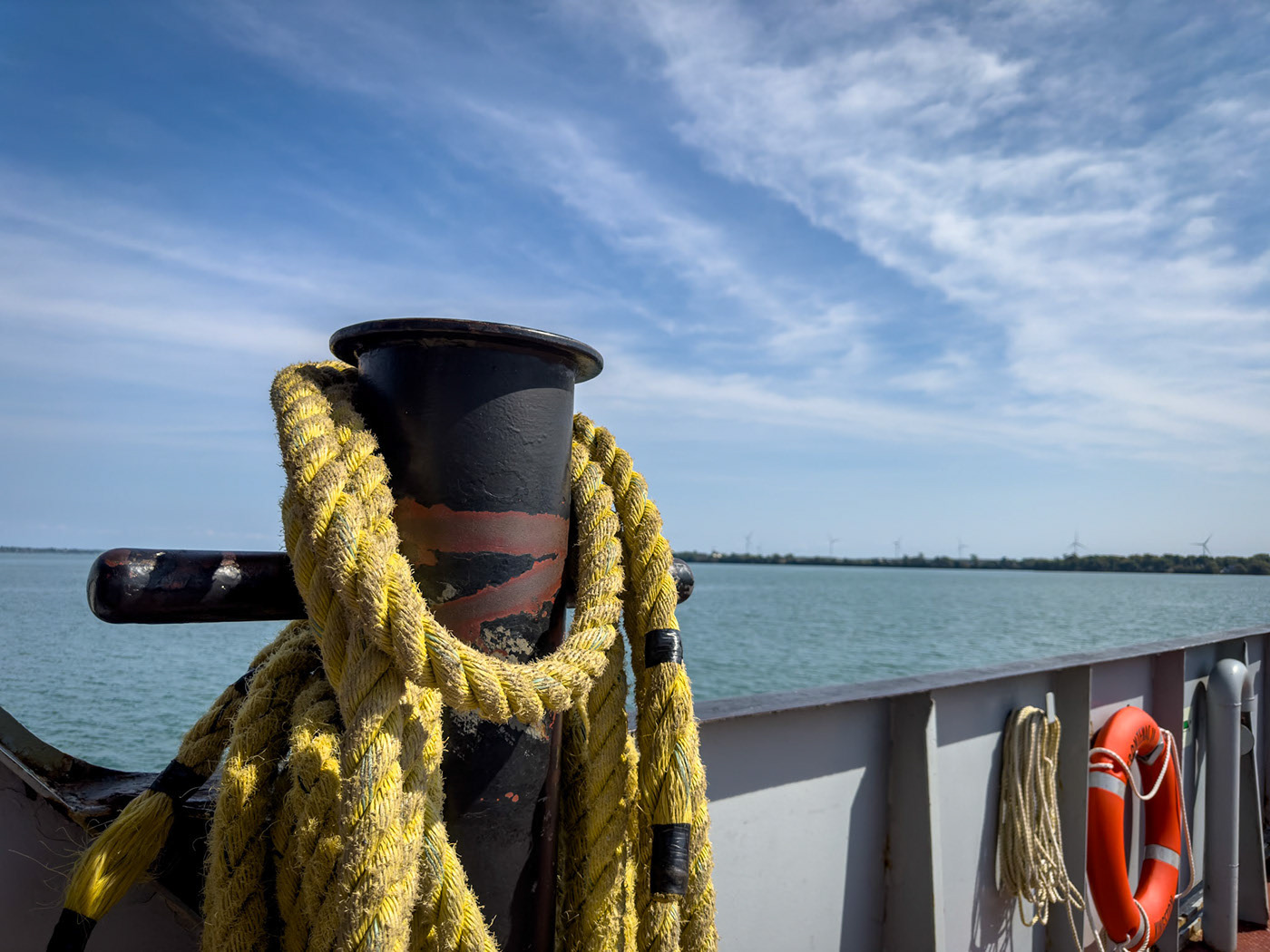First Photo Walk of 2022
We may have had a wet Christmas for 2021, but the evening of the first day of 2022 brought the winter weather. After an entire night of light snow, I knew I had to get outside with my camera before things warmed up at all. It was great exercise for me on many levels.
I decided to take a walk in the Rouge Park along the Vista Trail. The Rouge National Urban Park is the newest - and first - national urban park in Canada, encompassing nearly 80 square kilometres. It may even still be the largest urban park in North America.

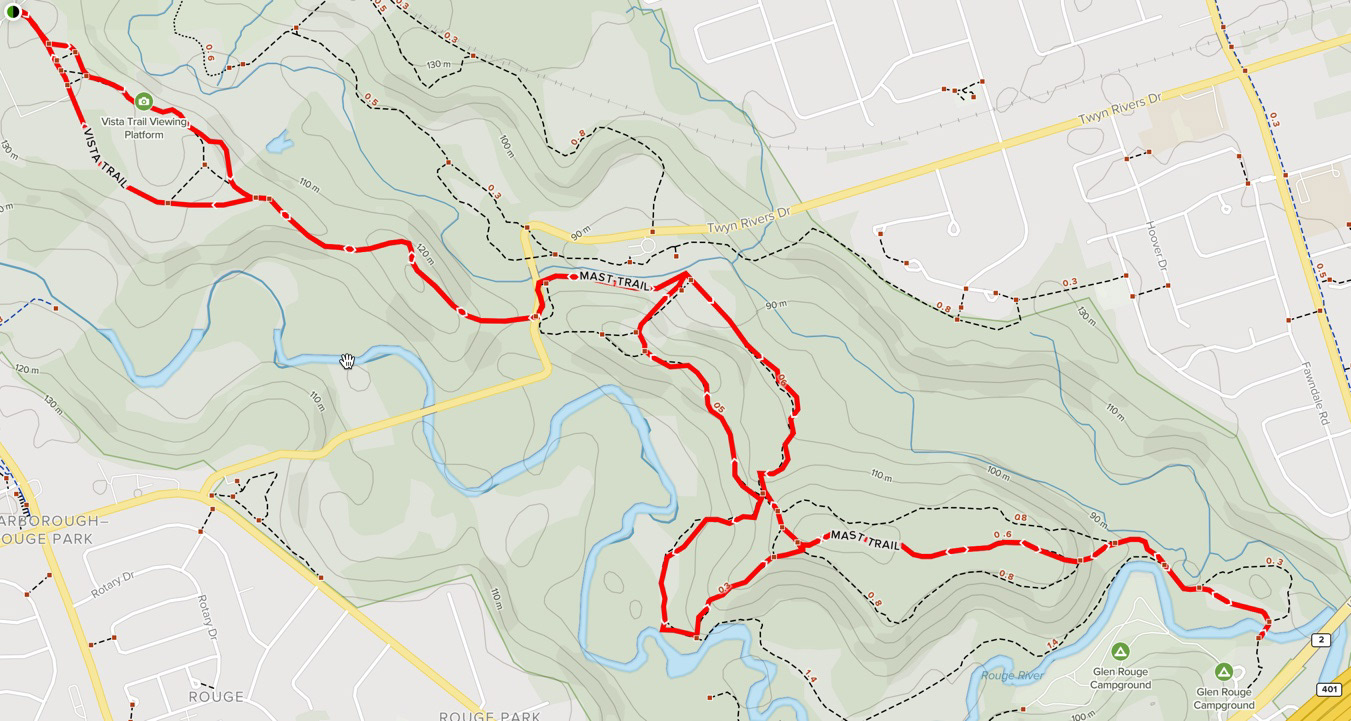
Maps of Rouge National Urban Park (May 2018)(courtesy Parks Canada) and AllTrails website (trail close up). I entered the park near the Zoo Road Welcome Area
And it's only a 20-minute drive from my home. I have walked on the Vista Trail before, but this time I started from a new entry point (for me), near the Toronto Zoo (north trailhead).
There are several access points to the park. You've probably seen some of my photo projects of the marsh area of the park, right by Lake Ontario, or photos from the Twyn Rivers area (south trailhead) where a decommissioned ski hill is likely one of the steepest and longest toboggan runs in the Toronto Area.
Although Riverdale Park may give the Twyn Rivers hill a run for its money...
The day was heavily overcast and chilly, so, dressed appropriately, I packed my gear and headed out. Once at the park, I made the executive decision to NOT carry my tripod for a change. In general, it was a good idea. If I really needed a stable platform, I always had my Platypod base with me.
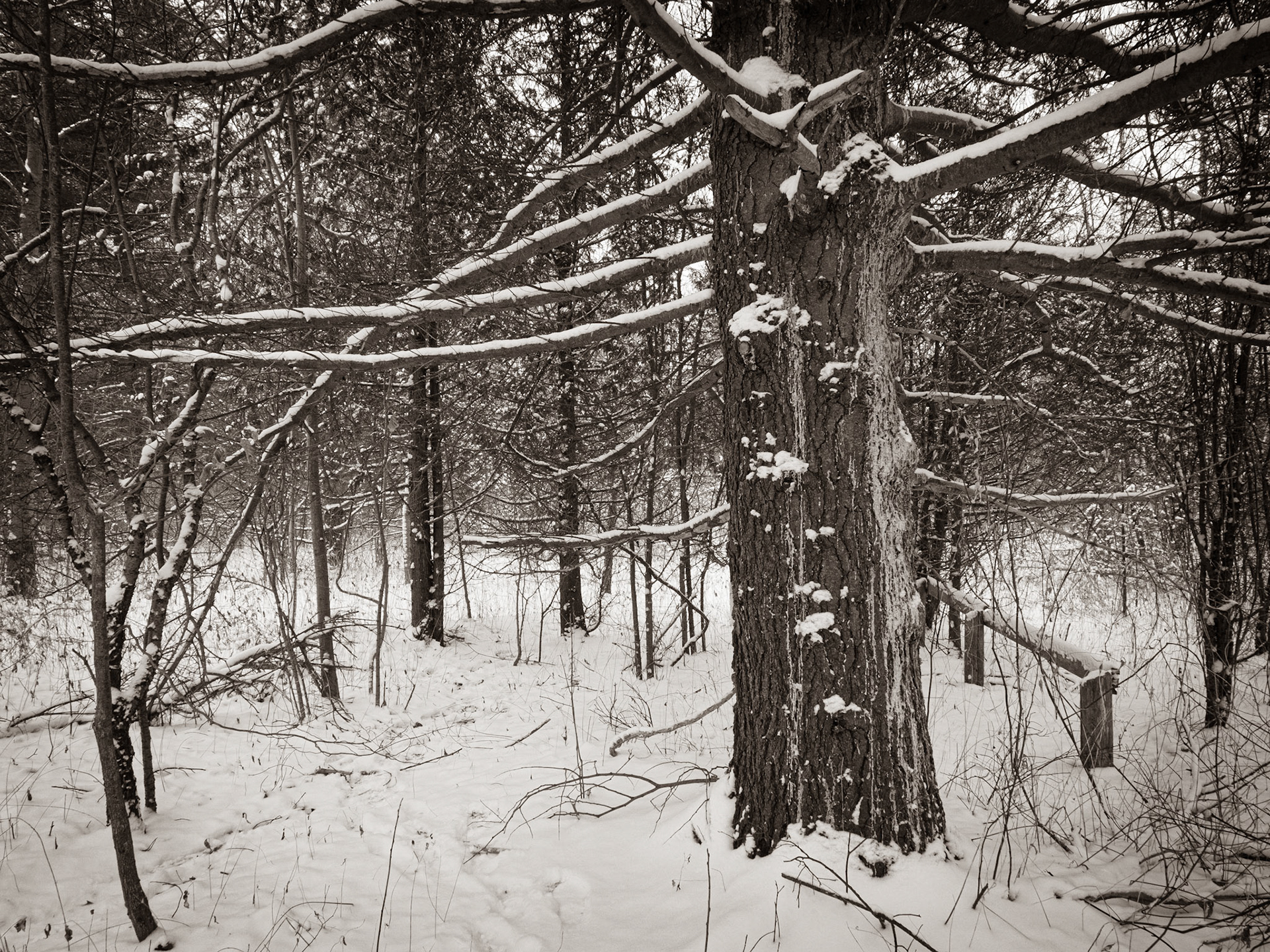

Heavy overcast lighting reduces contrast significantly. It's like a giant softbox light that stretches as far as you can see. This is great for opening up shadows and makes it much easier for the camera to capture a wide tonal range. But it also means that images can appear dull, or "flat" with no strong highlights or shadows. It's harder to capture texture in your images, unless it's very pronounced to begin with. From a color perspective, it makes the temperature of the light much "cooler" or bluish.
Often, things just end up looking grey, unless you either preset your camera white balance for jpeg captures, or make those adjustments when post processing your raw files.
I also find that overcast light is a great opportunity to "think in black and white," and plan for some images that will be truly monochromatic after processing. I worked with color toning as well as traditional black and white profiles where I felt it was appropriate.
Tech Note:
As I almost always shoot in raw format, I took a fair bit of time when processing to get a color balance that was overall pleasing to me. The "Cloudy" white balance in Lightroom Classic was just too warm for my taste, and the "Daylight" balance was too blue. Then, as I assembled this project, I realized I had not been looking at these images holistically. there were color balance "mismatches" when I put one image beside another. So, back to Lightroom I went, and reworked the white balance so it was more consistent (with a few exceptions).
The Vista
One advantage to the north trailhead of the Vista Trail is that I did not need to slog uphill to get to the observation station, which overlooks the Little Rouge Creek hundreds of feet below. On this approach, you can see not only the two levels of the station, but also the power lines that span the valley. I played with a selenium tone look to this image.
The fencing you see is not just for show; this elevation of the park is literally at the cliff edge, and the seemingly safe ground on the other side of the fence could give way at any time, as it is often undercut by wind erosion and rain.
Happy Accidents

My hands were mostly gloved on this hike, and at one point, while carrying the camera in one hand, I inadvertently triggered the shutter several times. Never underestimate a happy accident; I was very pleasantly surprised with one image in particular, the arc of my arm movement captured at 1/60 of a second, camera pointing into the forest. I chose not to crop or straighten this image.
The above image is my favorite capture from the viewing station. I had been here before, but in the autumn. The view feels very different in winter. I caught myself marveling at the fact that this scene is only minutes away from residential areas and less than 30 minutes from my own home. The Little Rouge Creek winds its sinewy way through the valley. One can almost see pioneers or First Nations peoples of old, setting up camp near the water's edge.


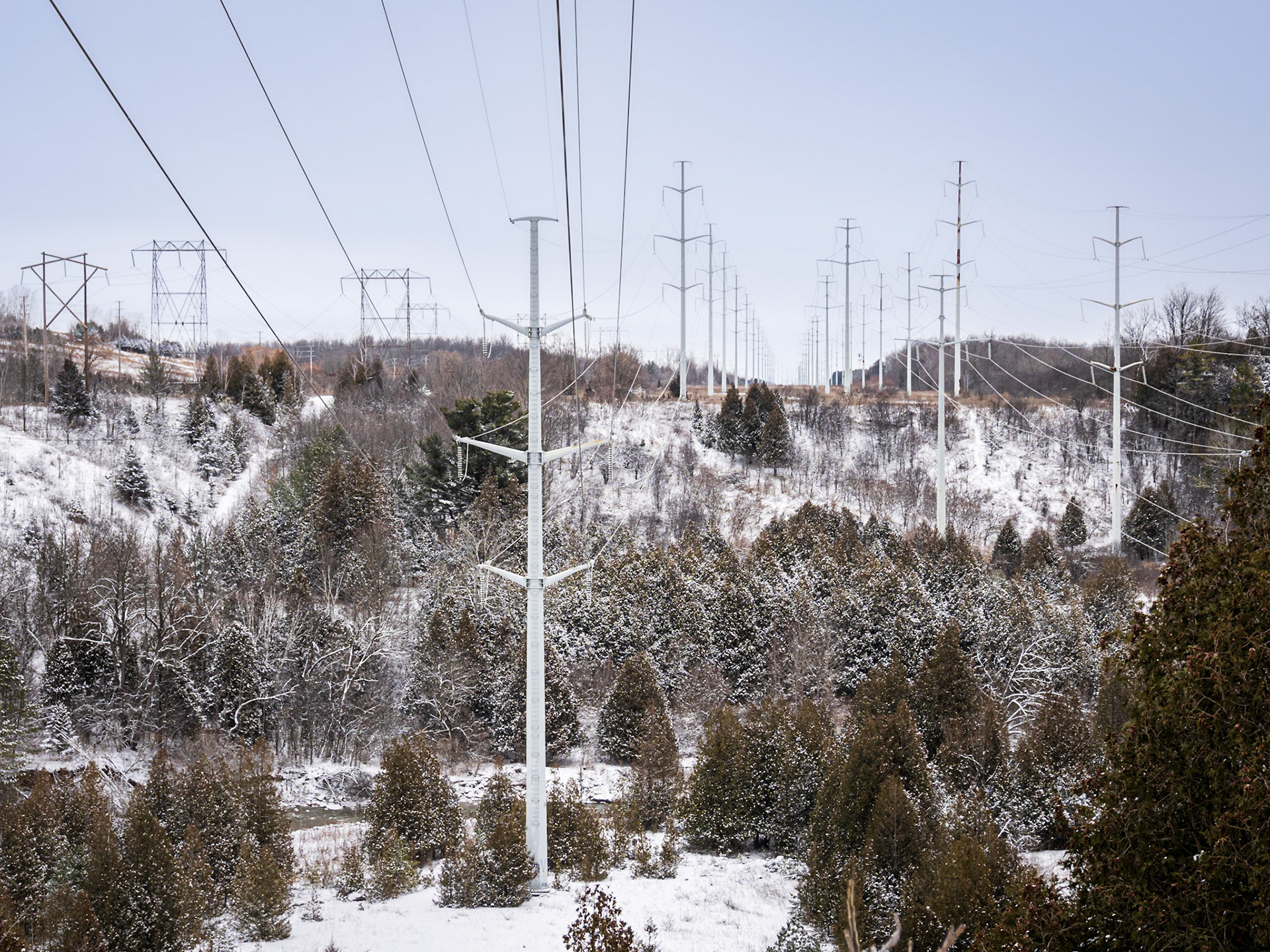
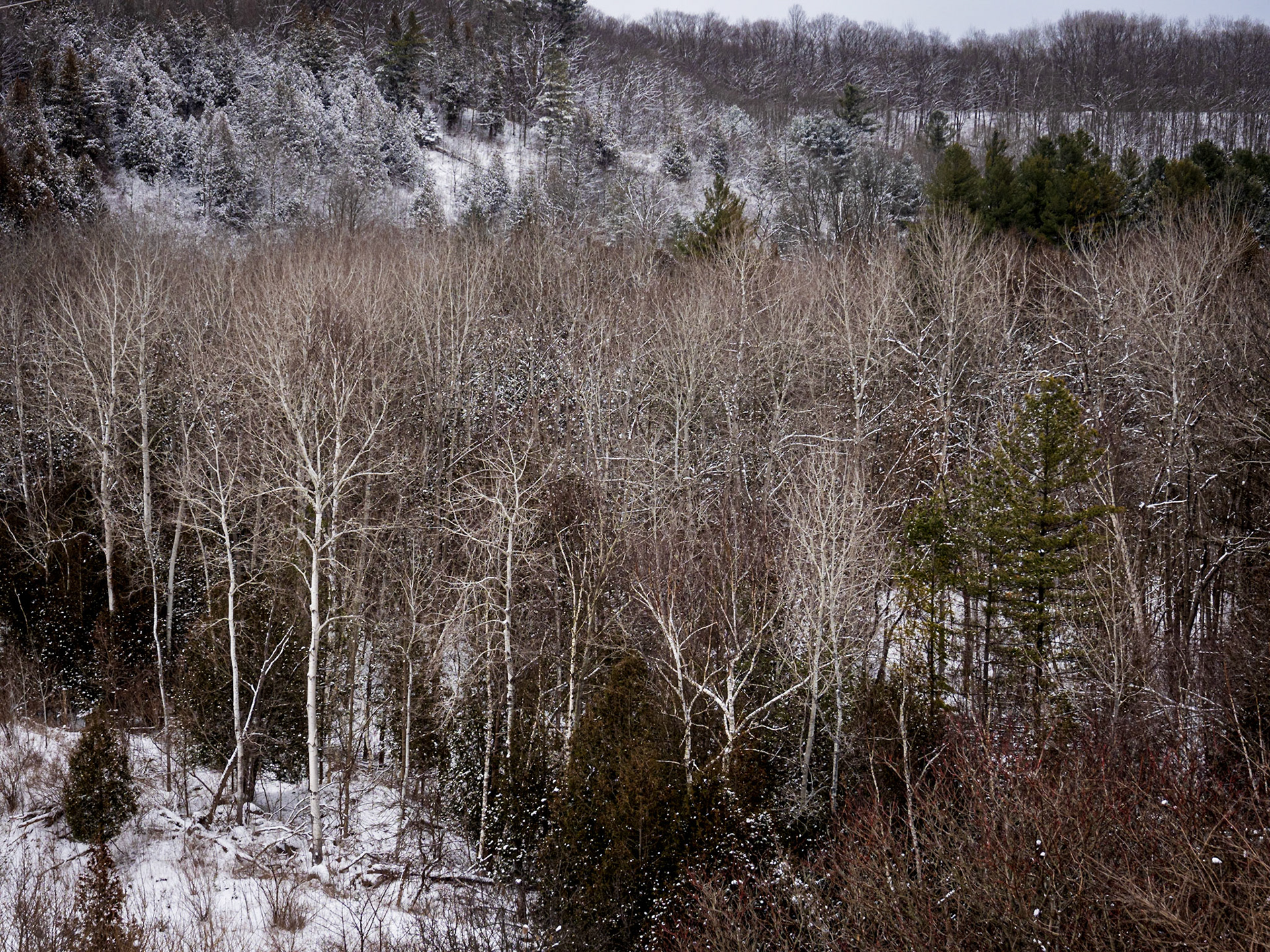
The towers and power lines are a stark reminder that mankind will insinuate itself into all aspects of the natural environment, at his own convenience. But if you use a longer lens, or look a little bit to the left or right, you can imagine the valley is pristine.
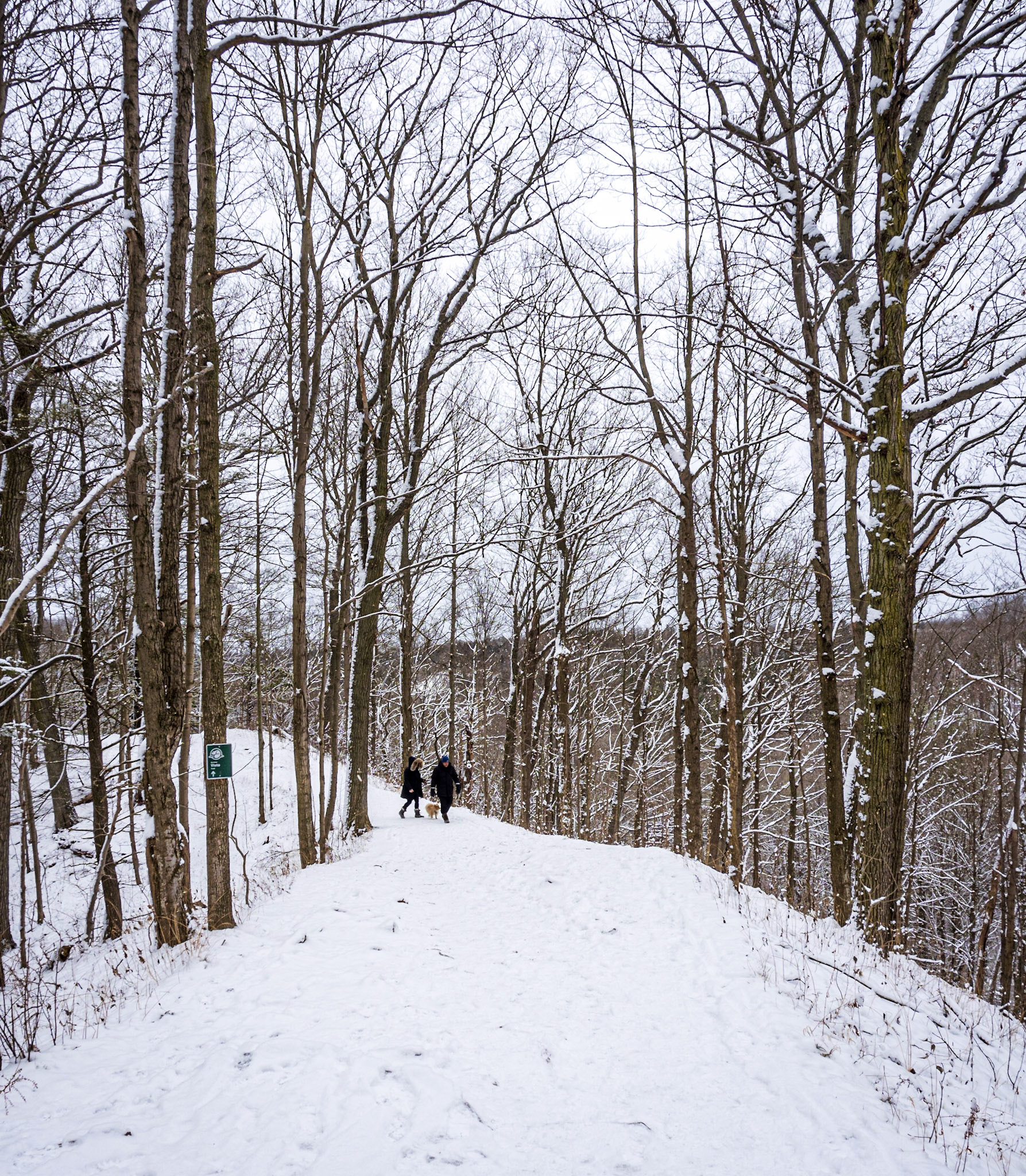


I was not alone on the trail, of course, so I decided every once in a while to include fellow travellers in my compositions. I think a couple of them may make it into my Adobe Stock portfolio of work.

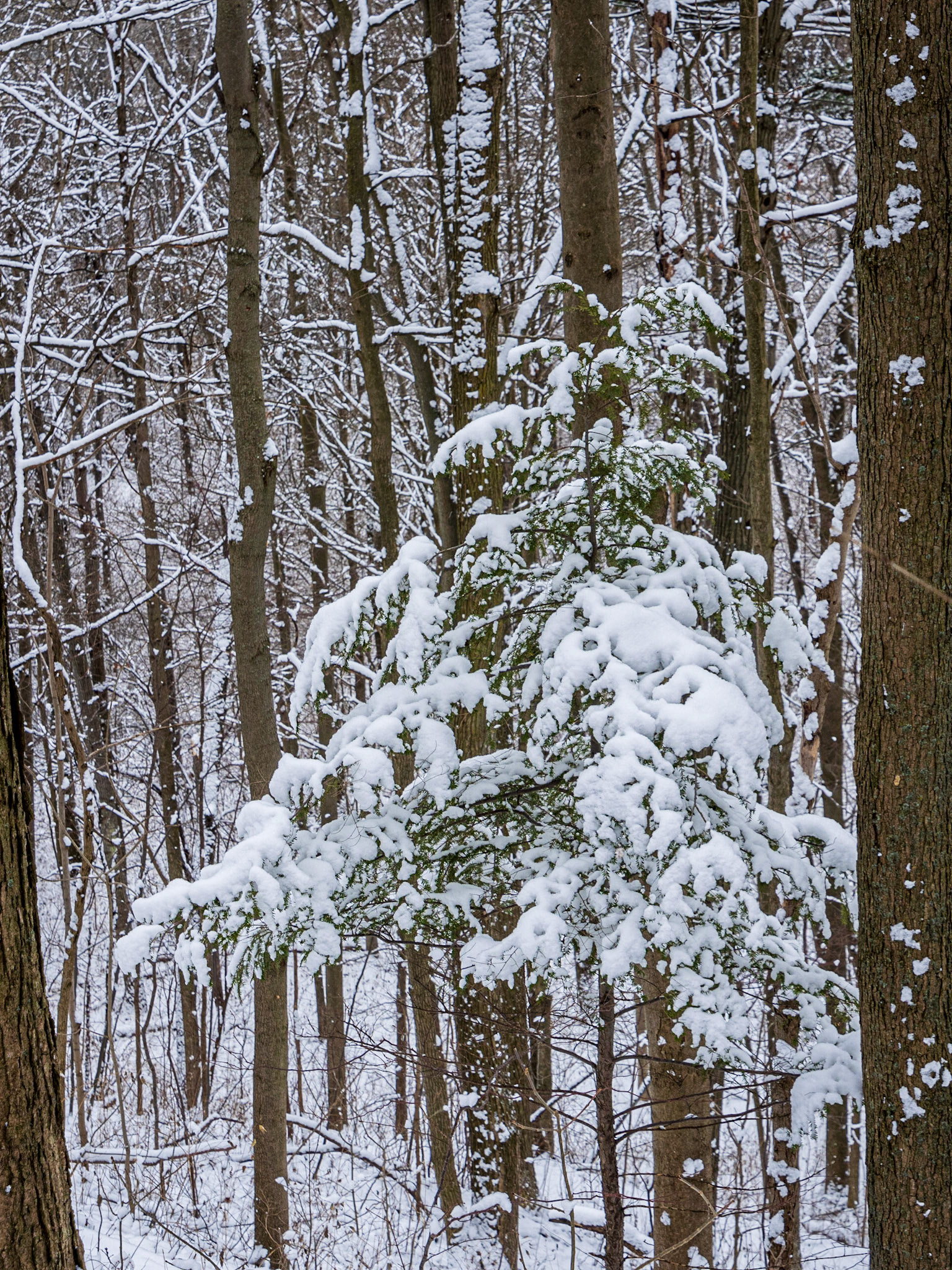
The contrast of the fresh snow on dark branches and yellow-green needles made for some interesting compositions, almost fractal in nature. And while I like these renditions, I don't think they are the images I want. I default to a processing workflow that makes the scene as natural as I can make it, often without a deeper introspection as to what the image could be, when not documentary in nature. This is something I need to work on.


While I captured some decent landscapes on my walk, I was also treated to a bit of wildlife; this pileated woodpecker caught my attention at first because it was chirping away in the trees. I quickly located it as it hopped up a dead tree and I was able to switch from my landscape lens to my long telephoto to get several captures. My Olympus 100-400mm lens made these images possible, but at the cost of a much higher ISO (2000) to ensure there was no camera shake or subject movement.
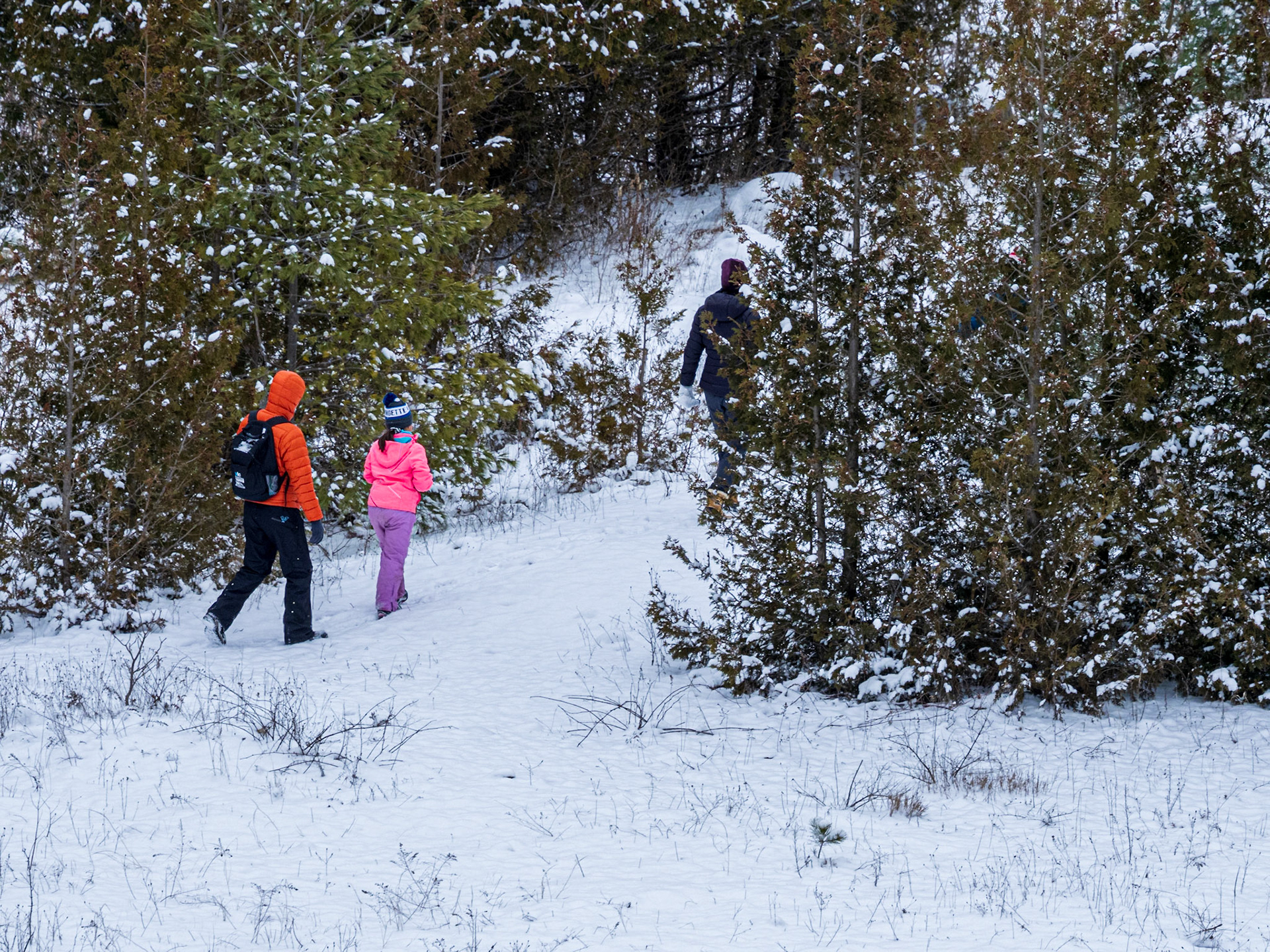

Going My Way?
As I walked the trail, every so often I would see a lost glove or hat carefully hung on a branch waiting - no doubt in vain - for its owner to come looking. Heading back to the parking lot, I saw this red child's mitten, seemingly pointing the way back. This mitten was there on the start of my hike as well, but the viewpoint I had did not make me stop and think, originally. On the way back to the car, however, I still had my 100-400m lens attached to my camera, and the combination of focal length and new viewpoint, made me stop and compose this scene. The shallow depth of field provided by my zoom lens, along with the saturated colour of the mitten, add visual emphasis and interest, helping the lost article stand out in a sea of brown, grey and white.
Cardinals

I love this image. There's a high-key feel to the scene that was definitely present on location, but I admit to "pumping it up" somewhat in post processing. A friend of mine told me that when she first saw the image, she thought the branches were full of cardinals. Wouldn't THAT have been a gorgeous sight!
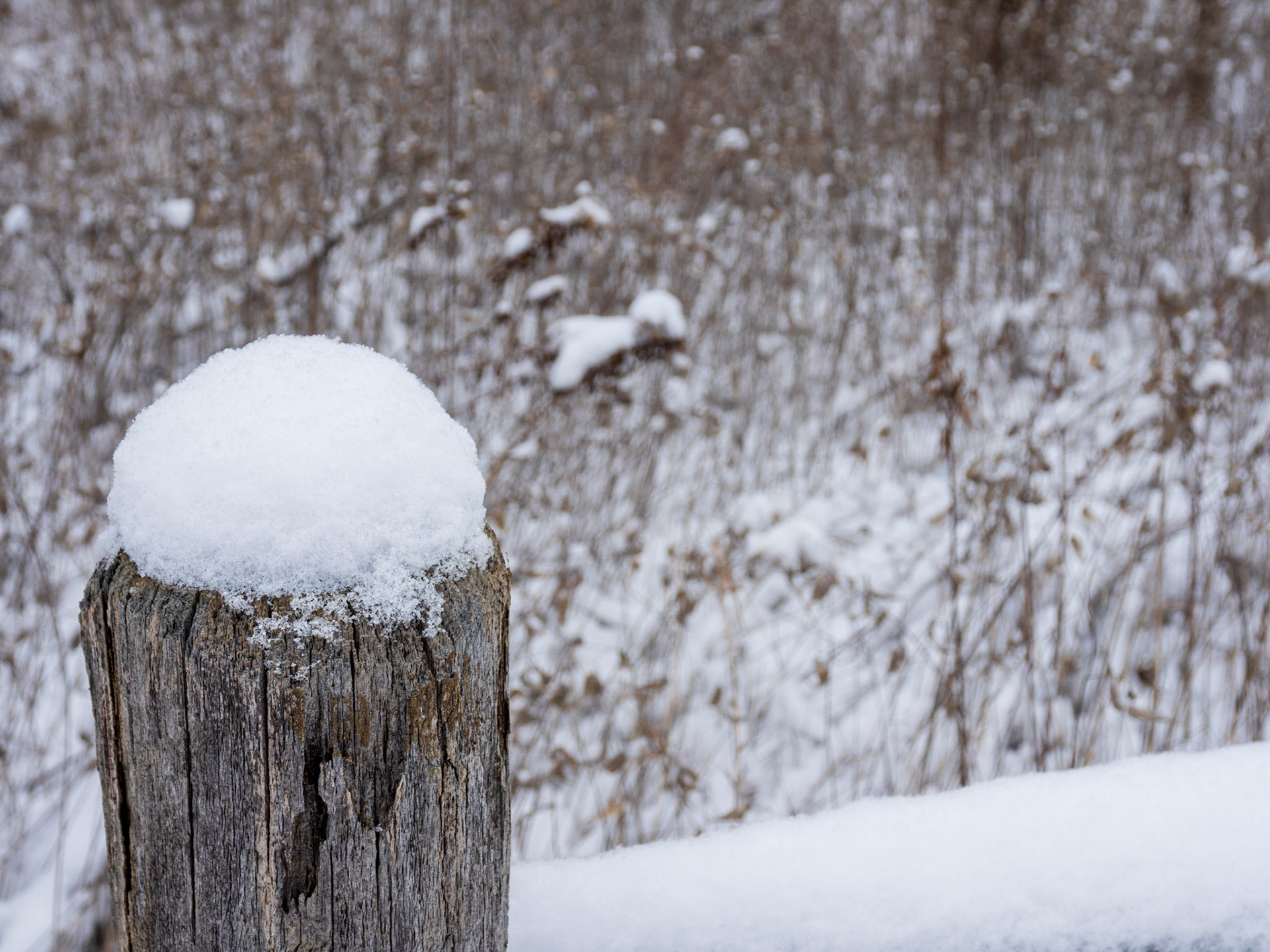
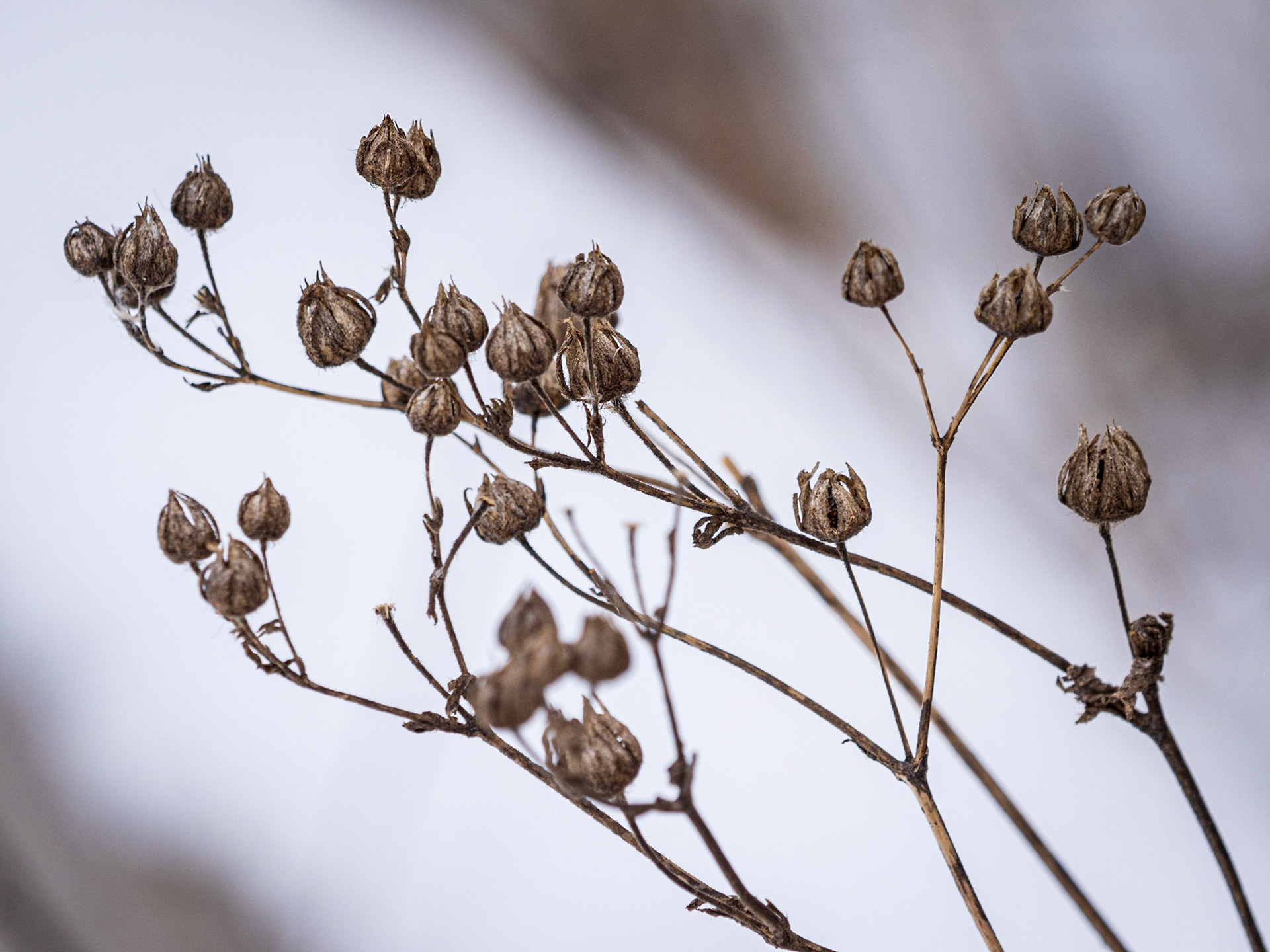
My super zoom can focus quite close for a long lens (1.3M throughout the zoom range), giving me the ability to get some pretty tight shots of nearby objects as well as distant ones.
Only an overcast day could help define these subtle changes in tone, texture and color. To me, it feels like a naturally occurring gradient.

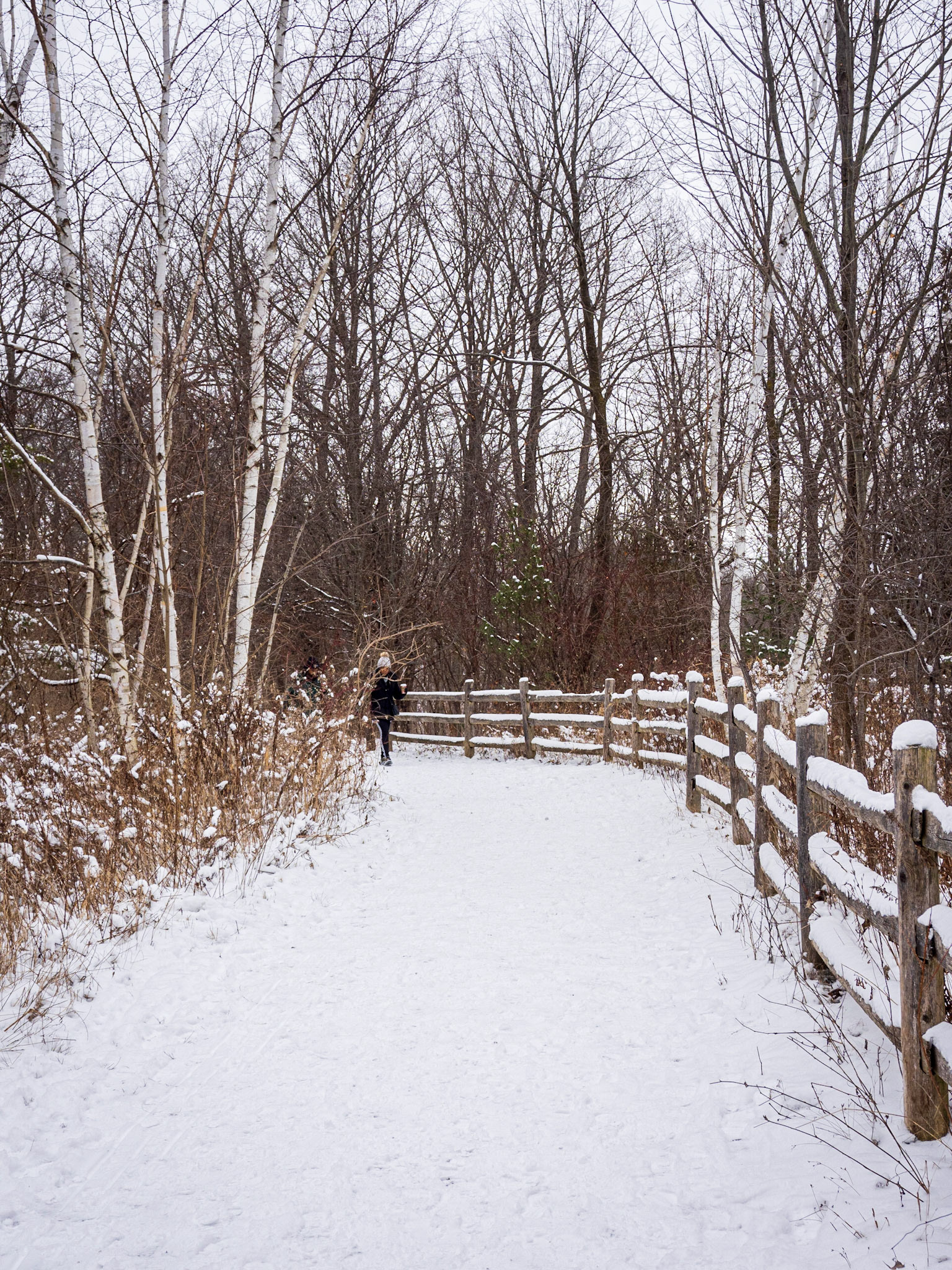
I honestly couldn't decide which of these images I preferred. In both cases, we're seeing almost the same amount of fence, creating strong leading lines.
On the left:
On one hand, the red jacket really pops and adds not just scale but a visual anchor point. The eye can't help but move to and rest on the hiker. I think the strong lines of the fence are powerful enough to help the eye continue past the hiker. On the other hand... well, it's a RED jacket. We have spot vs line along with a contrast of colour.
On the right:
Slight changes in camera position, focal length, a new human element and a big change in orientation make the fence an even stronger graphic element, thanks to the converging lines of the fence and the eye moves right through down the path and out, perhaps only briefly resting on the person. The new hiker still gives a sense of scale, but also blends in more with the scene, almost unnoticed.
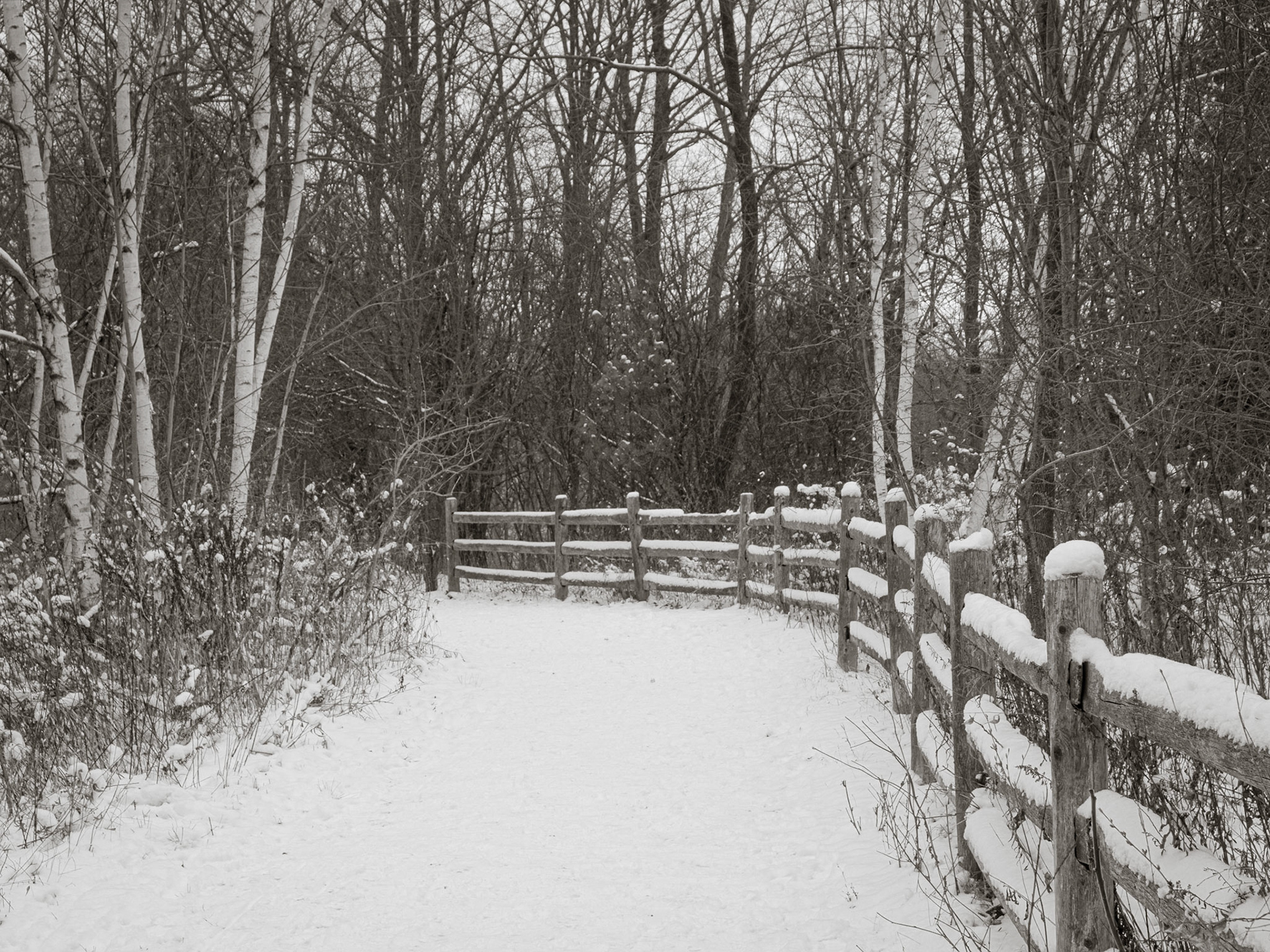
And now as I walk back to the car, I thank you for walking with me, even after the fact. I hope you enjoyed this trip and my visual treatment of it. Feel free to comment below.
And - Happy New Year!

